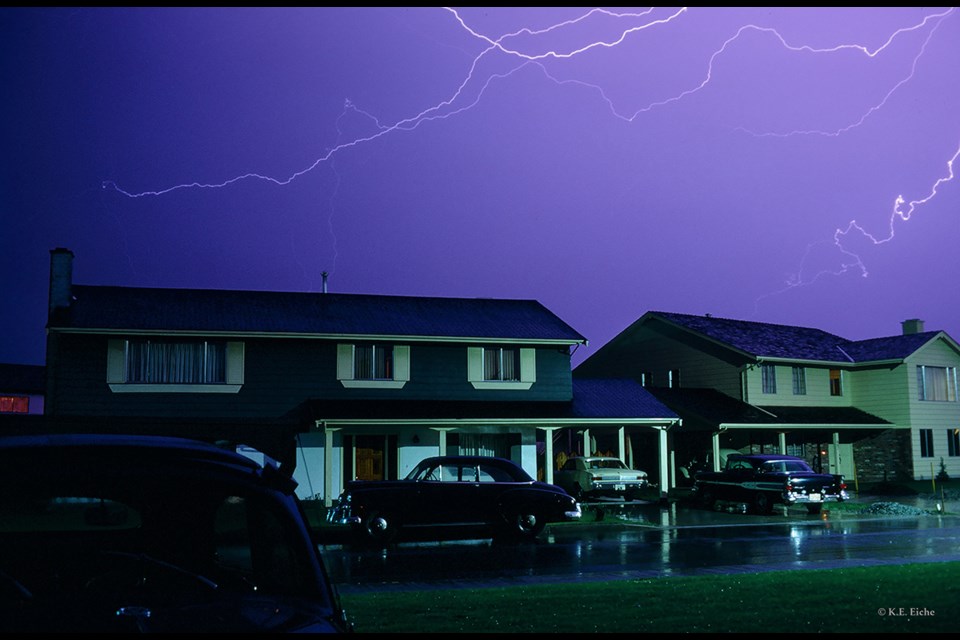When did you last look up at the sky? (Are you grumbling that your neck hurts when you raise your head?) The sky is like a stage, with a non-stop performance of a continuously changing show, except when every day-time performer is away on a break, leaving the sky a blank blue.
Mountains, valleys, flatlands, extensive coastline – they’re all part of our local geography and they lead to a range of interesting weather patterns. I haven’t seen another electric storm like the one my father photographed in May 1968, but the clouds – most recently, lenticular clouds and a mackerel sky – hold me spellbound.
Fortunately, that chronic neck pain preventing you from looking up hasn’t always been a problem. In antiquity, people spent a lot of time, heads raised, perusing the heavens. The names of the best known constellations of stars in the western sky are based on ancient Greek mythology and were first described by the Greek poet Aratus around 270 BC. In the 16th -18th centuries more constellations were discovered in the southern hemisphere, which were named after scientific instruments and exotic animals.
The ancient Greeks also pondered the causes of lightning and thunder. Aristotle (384 - 322 BC) was the first to realize that lightning could be seen before thunder was heard, to wit that light travels faster than sound, but he didn’t understand electric charges and ascribed lightning to a dry exhalation from clouds.
Rainbows were considered by some ancient Greeks to be the manifestation of the goddess Iris, messenger of the gods (because the rainbow appears to link sky and earth). Aristotle, being a philosopher, dismissed the mythological explanation, and discussed the rainbow as a natural event in his work “Meteorologica.” About five centuries later, Alexander of Aphrodisias wrote a commentary on “Meteorologica,” challenging Aristotle’s conclusion regarding the rainbow’s colours. However, it wasn’t until the 17th century that the first detailed scientific study of the rainbow was published, by the French philosopher René Descartes.
Although the basics of the water cycle were understood by ancient Greeks, some believed that clouds were actually the ground on which the Olympian gods walked. Their different shapes and colours went uncategorized. Finally, at the beginning of the 19th century, the Londoner Luke Howard (1772-1864), a chemist and amateur meteorologist, proposed a cloud classification system that’s the basis for our modern system. Howard’s interest in meteorology began when he was a schoolboy in Oxfordshire and spent hours staring out the window at the sky. In 1802 he held a lecture in London, introducing his audience to cloud types, which he named in Latin, as was proper for natural history nomenclature. Howard also stressed that the sort of visual observations of clouds routinely made by farmers, shepherds and sailors were as important as scientifically obtained measurements for predicting the weather.
If your neck will allow it, and you’re curious about what’s happening in the sky, I recommend joining the Cloud Appreciation Society founded 2005 by – naturally – an Englishman. You’ll be enthralled, I guarantee.
Sabine Eiche is a writer and art historian



